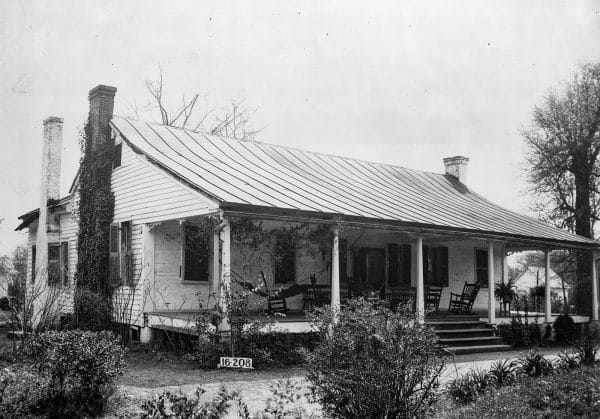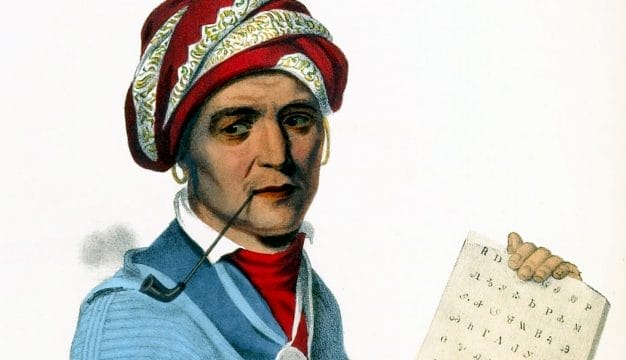John McKee
 John McKee
John McKee (1771-1832), one of the first settlers of Tuscaloosa County, played an important role in transforming the southern frontier. He served as an agent for the federal government to the Choctaws, Chickasaws, and Cherokees, secured the support of the Choctaws and the Chickasaws during the War of 1812, and served as a commissioner during the negotiations of the Treaty of Fort St. Stephens in 1816 and the Treaty of Dancing Rabbit Creek in 1830 with the Choctaws. In addition, McKee was the register of the United States Land Office in Tuscaloosa and represented Tuscaloosa in the U.S. House of Representatives.
John McKee
John McKee (1771-1832), one of the first settlers of Tuscaloosa County, played an important role in transforming the southern frontier. He served as an agent for the federal government to the Choctaws, Chickasaws, and Cherokees, secured the support of the Choctaws and the Chickasaws during the War of 1812, and served as a commissioner during the negotiations of the Treaty of Fort St. Stephens in 1816 and the Treaty of Dancing Rabbit Creek in 1830 with the Choctaws. In addition, McKee was the register of the United States Land Office in Tuscaloosa and represented Tuscaloosa in the U.S. House of Representatives.
McKee was born about 1771 to John (or James) McKee and Esther “Nannie” Houston, who were farmers on Buffalo Creek in Rockbridge County, Virginia (then part of Augusta County). Little is known about McKee’s early life other than that he attended Liberty Hall Academy (now Washington and Lee University) in Lexington, Virginia, where he studied Greek and Latin before striking out for the southern frontier. In 1792, William Blount, governor of the Southwest Territory—which soon became the state of Tennessee—appointed McKee to survey the boundary established by the Cherokee Treaty of Holston, which had been signed on July 2, 1791. Although difficulties prevented completion of the survey, Blount sent McKee on a peacekeeping mission to the Cherokees in February 1793; by the next year, he had been appointed the territory’s temporary Cherokee agent. McKee then accompanied five Chickasaw chiefs to Philadelphia to meet with President Washington in September 1793, after which he took up residence at Tellico Blockhouse, an American outpost on the Little Tennessee River, in an effort to keep peaceful relations with the Cherokees.
McKee obtained a license to practice law in the Court of Pleas and Quarter Sessions of Blount County in the Southwest Territory in January 1795 and was commissioned by Blount as a lieutenant colonel in the militia and appointed as the clerk of Blount County in August 1795. In 1797, the U.S. government commissioned him to go to Pensacola to discuss the payment of debts owed by the Choctaws to Panton, Leslie & Company. Shortly thereafter, McKee was appointed as the agent to the Choctaw nation, serving in that capacity from May 1799 until March 1802.
McKee later became involved in the intrigue surrounding the efforts by the United States to take control of the Floridas from Spain. The United States annexed parts of Spanish West Florida in 1810, claiming the area as part of the Louisiana Purchase. On January 26, 1811, Pres. James Madison sent McKee and George Mathews, the former governor of Georgia, to Florida to persuade the populace in West and East Florida to declare independence from Spain so that the United States could incorporate them into the Union. Their mission failed, possibly because McKee and Matthews were protecting their own business interests in the territory, primarily with Panton, Leslie & Company. Spain did surrender Mobile to the United States in April 1813, but East Florida did not become a part of the United States until 1821 through the Adams-Onis Treaty.
 Hill of Howth, 1930s
In 1813, Gen. Andrew Jackson sent McKee to the Choctaws to ensure that tribe’s loyalty to the United States as hostilities began to increase on the frontier between settlers and the Creeks. McKee also succeeded in recruiting Choctaw warriors to fight with the Americans against the Red Stick faction of the Creek nation during what would soon become the Creek War of 1813-14. McKee himself led a contingent of these warriors to attack what was left of a Creek town at the falls of the Black Warrior near Tuscaloosa. In April 1814, McKee once again was appointed U.S. agent to the Choctaws. McKee then recruited both Choctaw and Chickasaw warriors to fight with Jackson against the British. McKee, along with John Coffee and John Rhea, negotiated the Treaty of Fort St. Stephens on October 24, 1816, which required the tribe to cede 10,000 acres east of the Tombigbee River to the United States. Also in 1816, McKee built a house near Boligee in Greene County, which was referred to as the “Hill of Howth.” This house served as his permanent residence until his death.
Hill of Howth, 1930s
In 1813, Gen. Andrew Jackson sent McKee to the Choctaws to ensure that tribe’s loyalty to the United States as hostilities began to increase on the frontier between settlers and the Creeks. McKee also succeeded in recruiting Choctaw warriors to fight with the Americans against the Red Stick faction of the Creek nation during what would soon become the Creek War of 1813-14. McKee himself led a contingent of these warriors to attack what was left of a Creek town at the falls of the Black Warrior near Tuscaloosa. In April 1814, McKee once again was appointed U.S. agent to the Choctaws. McKee then recruited both Choctaw and Chickasaw warriors to fight with Jackson against the British. McKee, along with John Coffee and John Rhea, negotiated the Treaty of Fort St. Stephens on October 24, 1816, which required the tribe to cede 10,000 acres east of the Tombigbee River to the United States. Also in 1816, McKee built a house near Boligee in Greene County, which was referred to as the “Hill of Howth.” This house served as his permanent residence until his death.
McKee continued to serve as the Choctaw agent until 1821, when he was appointed as the register of the U.S. Land Office in Tuscaloosa. In this position, McKee administered the sale of public lands in the western part of the new state. From March 4, 1823, until March 3, 1829, he represented the congressional district encompassing Tuscaloosa in the U.S. House of Representatives as a Jacksonian Democrat. Because of his experience as an Indian agent, McKee served on the House Committee on Indian Affairs. After his service in Congress, McKee was appointed as one of the commissioners who negotiated the Treaty of Dancing Rabbit Creek, signed on September 27, 1830, whereby the Choctaws once again ceded territory to the United States, this time a large tract of land west of the Tombigbee River.
Biographies of McKee conflict as to whether he ever married. Some state that he did not, but others state that he married a Chickasaw woman and had a son named Alexander and a daughter named Alzira. When his will was probated in August 1832, the only bequests were to William P. Gould, reportedly a kinsman, and Alexander H. McKee, presumably his son. The probate record indicates that McKee died on August 12, 1832. He is buried in the Bethsalem Cemetery in Boligee.
Further Reading
- Stagg, G. C. A. “George Mathews and John McKee: Revolutionizing East Florida, Mobile, and Pensacola in 1812.” Florida Historical Quarterly 85 (January 2007).
- Halbert, H. S., and T. H. Hall. The Creek War of 1813 and 1814. 1895. Reprint. Tuscaloosa: University of Alabama Pres, 1995, pp. 217-18.



